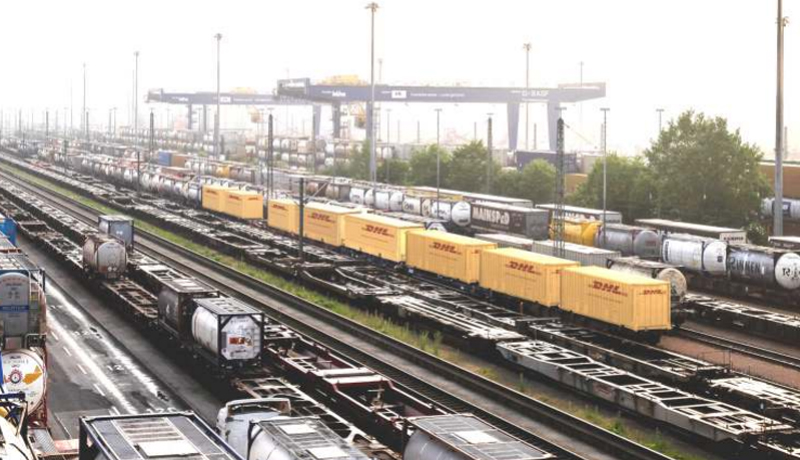DHL Next-Generation Wireless Trend Report explores the future of IOT in logistics
A world where everyone, everything is connected everywhere is coming
The evolution of wireless networks and the future of the Internet of Things (IoT) in logistics will profoundly change the way people are connected with different wireless technologies dominating the new trend, DHL pointed out in its recently released new Trend Report titled “Next-Generation Wireless in Logistics.”
 Even before the current COVID-19 crisis, wireless communication technology was making headlines. Much of the recent interest has focused on 5G mobile data networks that are being rolled out in many countries. 5G promises a host of benefits for end users, businesses, and telecommunications systems operators alike, including higher speeds, greater capacity, and tailored services for a new generation of smart connected devices.
Even before the current COVID-19 crisis, wireless communication technology was making headlines. Much of the recent interest has focused on 5G mobile data networks that are being rolled out in many countries. 5G promises a host of benefits for end users, businesses, and telecommunications systems operators alike, including higher speeds, greater capacity, and tailored services for a new generation of smart connected devices.
Beyond 5G, progress across a wide range of different wireless communication technologies is now creating new opportunities for logistics to improve visibility, enhance operational efficiency, and accelerate automation.
Well-known technologies like WiFi and Bluetooth, and lesser-known technologies like Low Power Wide Area Networks (LPWAN) and Low Earth Orbit (LEO) Satellites have been enhanced for industrial use. These next-generation wireless technologies will enable the next step in the communication revolution, moving towards a new world in which everyone and everything can be connected everywhere.
Building a fully connected future for logistics
In a recent survey of 800 supply chain leaders conducted by DHL, 60% of respondents stated that visibility of their supply chain is currently inadequate. The top three key challenges among the respondents are achieving true end-to-end visibility, lack of a single centralized platform to drive IoT initiatives, as well as fragmented data collection from inherently heterogeneous supply chains.
The top three priorities identified shaping visibility strategies are end-to-end transportation visibility, inventory visibility, and the implementation of supply chain data analytics. 75% of respondents reported they intend to implement at least one next-generation wireless technology in the near future to achieve their visibility goals.
“After having transformed asset-light industries, the digital revolution is now rapidly changing more asset-heavy industries, from automotive and manufacturing companies to healthcare providers,” says Markus Kückelhaus, Vice President Innovation & Trend Research, DHL Customer Solutions & Innovation.
“Our own sector, logistics, will be both a major beneficiary of the IoT-enabled digital revolution and an enabler of it. Although some parts of the logistics industry are already smart and connected, next generation-wireless is set to usher in the next wave of IoT in logistics.”
In a future where everyone and everything is online everywhere, three key things will become possible for the logistics industry:
- Total Visibility: Every shipment, logistics asset, infrastructure, and facility will be connected thanks to widely available networks and inexpensive high-performance sensors. This will enable highly efficient automation, process improvement, swifter and more transparent incident resolution, and – ultimately – the best service quality for both B2B and B2C customers.
- Wide-Scale Autonomy: All autonomous vehicles, whether indoor robots or logistics vehicles on public roads, rely on ultra-fast, reliable wireless communication to navigate and traverse their worlds effectively. While these solutions are on the rise today, next-generation wireless will be one key enabler driving their widespread use and moving the world to autonomous supply chains.
- Perfecting Prediction: With so many things online, the volume, velocity, and variety of data that we collect will triple the big data already being generated today. The continued progress of machine learning systems and artificial intelligence paired with the ultra-low latency of next generation-wireless means that data-driven prediction systems for forecasting, delivery timing and routing may no longer be constrained by latency and performance of wireless networks.
While much of the forecast growth will be achieved using technologies that are already familiar to many of us, truly universal connectivity will require approaches that can offer new capabilities, including higher capacity, greater reach, faster speeds, better energy efficiency, and lower costs.
“Large-scale connectivity is an extraordinary technological and social success story. While IoT is not new in logistics, with 20 billion connected devices already in use globally, this story is still only just beginning. A myriad of technologies are simultaneously advancing at a rapid rate, which are also cost effective and increasingly ubiquitous. They are now becoming more accessible which suddenly opens up vast opportunities for the development of applications and use cases at an unprecedented rate,” explains Matthias Heutger, SVP, Global Head of Innovation & Commercial Development, DHL.
“Our Trend Report illustrates each of these next-gen wireless technologies, and outlines and compares them, their limitations as well as practical application. Furthermore, we highlight how the potential associated with these technologies is fast becoming a fundamental part of the supply chain of tomorrow.”
Next-generation wireless is a broad portfolio of technologies that promises to deliver against those diverse – and often competing – objectives. DHL’s Trend Report includes a specialized section on how the latest wireless technology works, highlights some innovative projects underway in the industry, and provides implementation guidelines for supply chain organizations. Source: www.dhl.com










